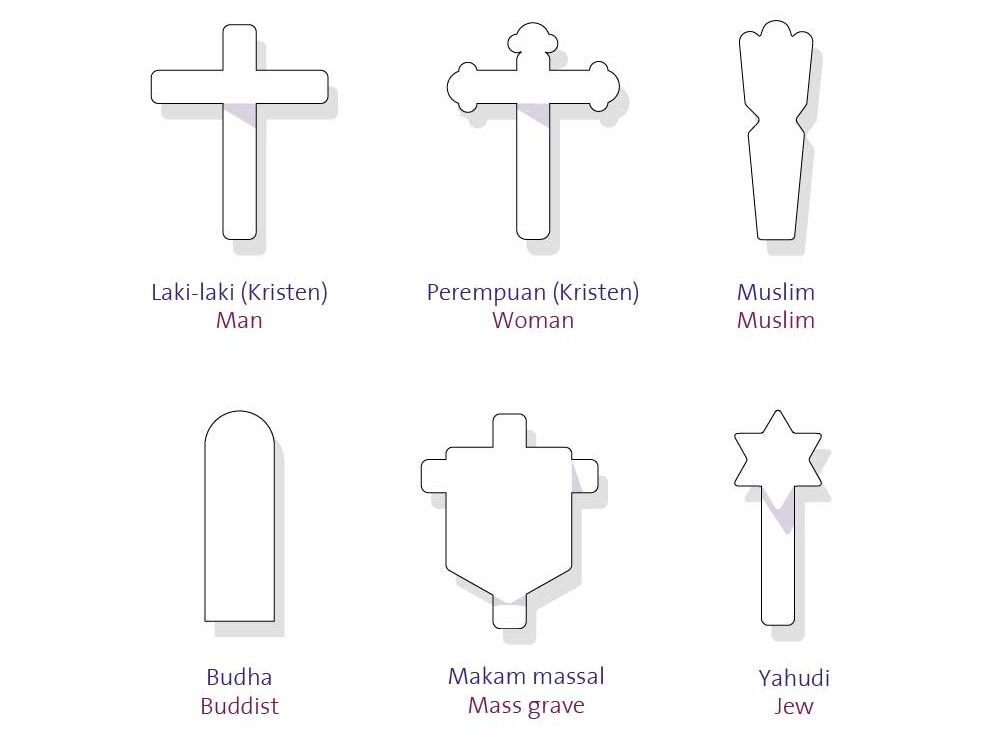At the Netherlands war cemeteries (erevelden) in Indonesia, each grave is marked with a unique shape that reflects the background of the war victim buried there. These grave signs are not only identifiers but also respectful tributes that acknowledge the religious belief, gender, or burial context of the deceased. The design of each marker helps us remember the individual lives lost in times of war, each with their own story, belief, and identity.

The image above illustrates the different types of grave signs found at the Ereveld:
- Christian Man: Marked by a simple Latin cross, this sign represents Christian men. It is one of the most commonly seen shapes across the erevelden.
- Christian Woman: The cross for Christian women has a more ornate design, with rounded edges and flourishes at the ends, subtly distinguishing it from the male version.
- Muslim: The Muslim grave sign features three rounded mounds at the top and a distinct narrowing at the base. The shape represents a traditional tombstone commonly found in Islamic burial practices in Indonesia.
- Buddhist: The Buddhist grave sign is a rectangular marker with a rounded top. The design is intended as a respectful symbol of the Buddhist faith
- Jewish: Graves of Jewish victims are marked by a cross with a Star of David at the top, symbolising their faith and cultural identity.
- Mass Grave: This special marker indicates a mass grave, where multiple individuals are buried together. The shape is wider and more geometric, with extended arms, to signify its collective nature.







